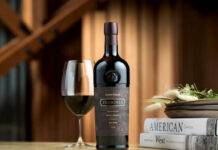As 2018 beckons the shift towards premium spirits is set to last, say firms

THE rise of premium products has been one of the biggest stories of the drinks industry in the last few years and 2017 seems to have proved no different as consumers in the on-trade continued to search out superior spirits.
As the year closes out, SLTN asked experts about the nature of the trend towards premium in pubs and bars throughout the year – and if they see room for further growth in the sector in the new year.
The demand for provenance and an interesting tale behind a product, as well as a spirit’s ability to be mixed in a cocktail, remain important factors in a drink’s desirability, said Dan Bolton, managing director of drinks firm Hi-Spirits.
Premiumisation is likely to drive growth in the drinks market for years to come.
He said: “Premium spirits have continued to be an important driver of on-trade sales. Consumers are increasingly interested in trying something new, and ideally served up with heritage, excitement and a story attached to it.
“Categories such as gin, rum and American whiskey have performed particularly well in terms of their appeal to consumers in cocktails and premium serves.”
Reiterating that view was Amy Burgess, trade communications manager at Coca-Cola European Partners, who singled out cocktails as a reason for the growth at the higher end of the spirits market.
“Premium and super premium spirits are experiencing strong growth,” she said.
“Gin is one of the spirits that is driving this trend, with volume performance increasing by more than a quarter since last year.
“With three quarters of consumers buying premium spirits when in a pub or bar and nearly half saying they would rather order a premium spirit when buying a long mixed drink, premiumisation is likely to continue driving growth in the drinks market for years to come.”
It would seem there’s never been a better time to stock premium spirits brands in the licensed trade as the trend towards these products looks set to linger for a while yet.
Neil Boyd, commercial director of Ian Macleod Distillers, the firm behind Glengoyne and Tamdhu whiskies as well as Edinburgh Gin, said he expects demand for premium white spirits, and gin in particular, to continue to grow.
He said: “With the premiumisation trend showing no sign of slowing down, and the exponential growth of the category this year – we anticipate that this growth will continue into 2018, especially in the white spirits category.”
Referencing the Mintel White Spirits Report, Boyd added: “White spirits volumes are expected to see a 6.2% rise over 2016-21 to reach 323 million litres and values are set to see a 23% jump over this period, owing to rising prices, and we foresee that premium gin, which shows no sign of slowing down, will be a large part of this uptake.”
And that point was backed by channel development manager at Bibendum, Christina Schneider, who asserted that vodka will enhance its position amongst premium brands in 2018.
Try multiple facings to draw the customer’s eye to certain lines along the back-bar.
Having taken something of a back seat while many of the other spirits categories went through a ‘craft revolution,’ vodka, said Schneider, is set for its own diversification in the premium segment of the market.
“Vodka is making a comeback,” said Schneider.
“It’s riding the craft wave, with some great craft vodkas coming on to the market and filling the gap between cheap, entry-level alcohol and super expensive, ‘bling’ brands.”
Of course, how these spirits perform will be influenced by the way in which venues market their selection. That was the view taken by Faith Holland of Diageo GB, who advised licensees that the way in which they display their premium spirits can encourage customers to trade up.
“Position premium products at the top of the fridge and make the most of the profit margins they offer,” she said.
“Try multiple facings to draw the customer’s eye to certain lines along the back-bar, with consumers admitting that visibility influences their decision.
“Keep the bar clear and clean so as not to block the view of the back-bar.”



















